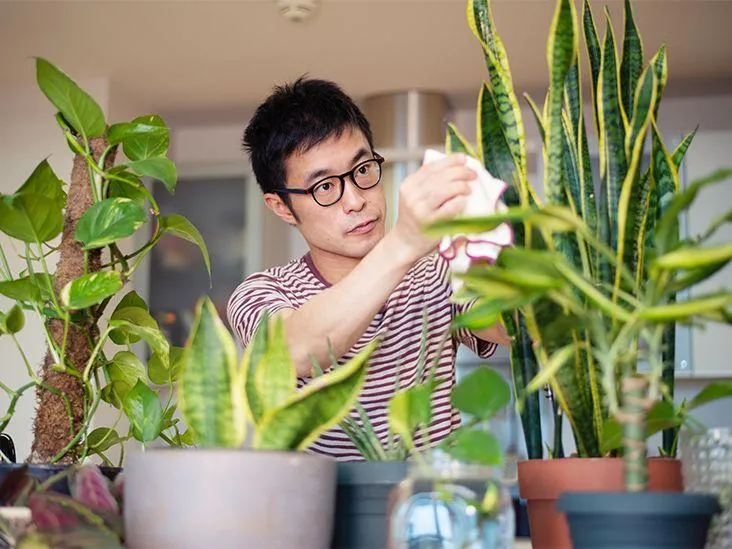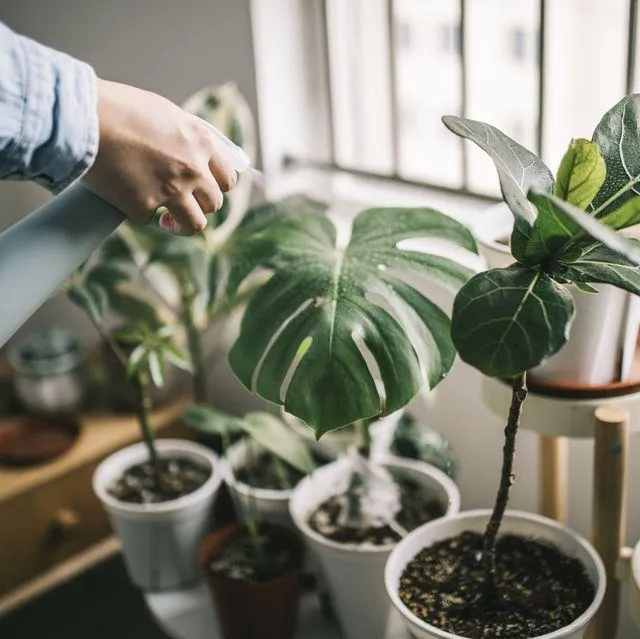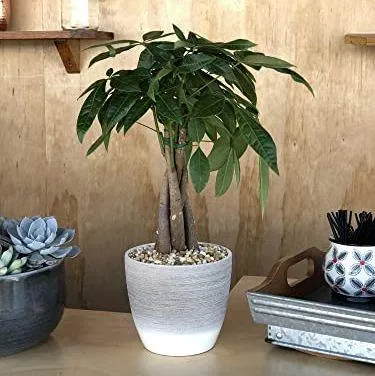Choosing the Best Indoor Tree for Your Home
Whether you want to bring a touch of nature indoors or simply add greenery to brighten up a room, indoor trees are a nice option. However, with so many varieties to choose from, it can be tough to pick the best indoor tree for your situation. In this article, I will address some common questions users may have when searching for “best indoor tree” and provide thorough answers based on my experience as an avid indoor plant gardener.
Do Indoor Trees Require a Lot of Maintenance?
From my experience growing various indoor trees over the years, maintenance really depends on the specific species. Some lower maintenance options include:
- Spider plant: This versatile plant is tough and forgiving. It only needs water when the top inch of soil is dry.
- Jade plant: Symbolizing good luck and prosperity in many cultures, jade plants are beautiful and need water just once every 1-2 weeks.
- Chinese evergreen: With its colorful leaves that come in shades of green, red, and white, this plant thrives on neglect. Water when the top inch of soil is dry.
On the other hand, species like ficus and fruit trees require a bit more TLC with regular watering, fertilizing, and pruning. So before choosing an indoor tree, consider how much maintenance your schedule allows. Often the lower maintenance options are the best choice for homes.
What Size Space Do Indoor Trees Need?
The amount of space an indoor tree needs largely depends on the maturity and eventual size it will reach at full growth. Here are some guidelines on tree size categories:
- Small: Under 3 feet, suitable for tabletops and small areas. Examples include jade, aloe, and lucky bamboo.
- Medium: 3 to 6 feet, ideal for most rooms. Spider plant, dracaena, and Chinese evergreen fall into this group.
- Large: Over 6 feet, requiring high ceilings or large open areas like atriums. Mature ficus, fruit trees, and palm trees belong here.
Be sure to research the ultimate size of a tree so it doesn’t outgrow its space. From my experience, the medium-sized varieties give the lush look of a tree without taking over the room.
Which Types Thrive with Low or Indirect Light?
Light conditions are an important consideration when choosing an indoor tree. While some users may think trees need tons of direct sunlight, many species actually prefer low or dappled light. Here are some top options for low-light areas:

- Chinese evergreen: As mentioned, this plant is incredibly tolerant of low light and thrives in indirect sunlight.
- Snake plant: Commonly called mother-in-law’s tongue, this tough plant filters toxins from the air and needs very little light.
- Dracaena: With its attractive strap-like leaves, dracaena comes in many varieties suited to shade. Just keep soil slightly dry.
- Pothos: Featuring heart-shaped leaves and trails that can cascade over the side of pots, pothos is virtually unkillable in low light.
When light is scarce, choosing from these sturdy options generally results in an indoor tree that stays green and grows well over the long haul.
What Factors Affect a Tree’s Water Needs?
Watering indoor trees properly is key, as both over-watering and under-watering can cause problems. But not all trees have the same watering requirements. Factors like light exposure, pot material, and soil composition impact moisture needs.
For example, plants in low-light areas tend to dry out slower than those basking in sun. Terracotta and unglazed pots allow more evaporation, so trees in them may need water a little more frequently. Trees with soil consisting of fast-draining materials like perlite have drier roots than those with organic-heavy soil retaining moisture.
The best approach is getting to know each tree’s individual signals for water. For most varieties, checking the top soil inch and watering when it becomes dry or light is a good general guideline. But being observant helps tailor care to suit each tree’s preferences best.
How Do I Introduce an Indoor Tree to a New Home?
Moving a tree between environments can be stressful, so easing the transition is important. Here are some tips from my experience successfully relocating indoor trees:
- Move the tree to its new spot gradually – don’t just change its entire location all at once.
- Acclimate it over a few days by exposing it to the new light/temperature conditions for increasing time periods each day.
- Watch for signs of water/fertilizer needs changing in its new setting and adjust care accordingly.
- Be extra vigilant post-move about signs of pest/disease issues and deal with them promptly.
- Give the tree extra TLC as it adjusts, withholding fertilizer until new growth emerges healthy.
Following these steps helps indoor trees transition smoothly to living happily in their fresh surroundings.

What Style of Décor Works Best With Indoor Trees?
The beauty of indoor trees is their versatility – they fit in virtually anywhere. But certain design styles tend to complement trees better than others:
- Natural or rustic decor – think wood, stone, and earth tones. Trees enhance the organic feel.
- Modern spaces – juxtapose sleek lines with the soft curves of trees for visual interest.
- Traditional – trees lend fanciful charm to formal décor like antiques or chinoiserie.
- Minimalism – use a high-impact specimen tree as a focal point in an otherwise sparse aesthetic.
At the same time, indoor trees can thrive with any look – from shabby chic to eclectic. Let your personal style be the guide, ensuring plants receive sufficient care no matter the setting.
Will an Indoor Tree Improve Air Quality and Health?
A common bonus of keeping indoor trees is their ability to naturally clean the air through photosynthesis. Some top air-purifying selections include:
- Peace lily: Known to remove mold spores, toxins, and pollutants like benzene and trichloroethylene from air.
- English ivy: Removes formaldehyde, which is commonly found in building materials like pressed wood.
- Bamboo palm: Effectively removes xylene from indoor environments.
- Philodendron: Reduces volatile organic compounds like trichloroethylene, which originate from cleaning solvents and printers.
Plus, trees’ simple presence has mental health benefits too. Their lush foliage has a stress-reducing effect and provides a sense of nurturing responsibility. So for cleaner air and a greener atmosphere, indoor trees are a total win.
I hope this overview addressed the most common user intentions when searching for recommendations on indoor trees. Please let me know if you need any clarification or have additional questions! Chosing the best tree depends on individual needs and care preferences. With some research, you’re sure to find a variety that will thrive happily in your indoor space for many years to come.
Top Indoor Trees for Home or Office
| Tree | Size | Light Needs | Water Needs | Care Level |
|---|---|---|---|---|
| ZZ Plant | Tall, upright | Low to medium | Allow soil to dry between waterings | Low maintenance |
| Peace Lily | Medium height | Low to bright, indirect light | Keep soil moist | Low, toxic to pets |
| English Ivy | Vining | Low to medium, indirect light | Water when top inch of soil is dry | Low, toxic to pets |
| Chinese Evergreen | Medium height | Low, indirect light | Water when top inch of soil is dry | Low maintenance |
| Dracaena | Tall, upright | Low, indirect light | Water when top inch of soil feels dry | Low maintenance |
FAQ
- What is the best indoor tree to have?
Many people enjoy having houseplants or potted trees indoors. Some good options are Christmas trees, banana trees, and dwarf date palms. They can liven up a space without needing lots of sunlight.

- How much light do indoor trees need?
Different types of indoor trees have varying light needs. Christmas trees and banana trees can get by with medium light, while dwarf date palms prefer bright indirect sunlight. No matter what, they’re unlikely to thrive in very dark spots. A little sunlight goes a long way for potted plants.
- What kind of care do indoor trees need?
Caring for indoor trees is kinda like looking after other houseplants. You’ll need to water them regularly to keep the soil damp but not soggy. Fertilizing every few months in the growing season helps too. Pruning or trimming may occasionally be necessary for shaping. And don’t forget to dust the leaves! Proper care ensures your indoor tree friends remain healthy.
- Will indoor trees produce fruit?
Certain varieties of indoor trees can potentially produce small fruits or flowers, though odds are less than if they were outside. Seemingly dwarf varieties like banana trees may amazingly send out mini bananas sometimes. Christmas trees, uh, obviously won’t fruit. But dwarf date palms have a chance of growing dates, if conditions are optimal. Who knows, you could get a surprise crop!
- How big do indoor trees get?
When choosing a tree for indoors, it’s important to think about size. Most dwarf varieties or trained specimens will stay compact – maybe 3 to 6 feet tall at most. Full-size trees may outgrow your home! Experts recommend picking types labeled “miniature” or “dwarf” to keep them within manageable proportions. Does that help narrow it down?
- What pests are common for indoor trees?
Just like outdoor trees, indoor varieties can sometimes contend with annoying pests. Mealybugs, aphids, and spider mites top the list as common indoor tree enemies. Scale insects may plague plants too. Keeping an eye out for bugs and treating with natural remedies at the first signs helps prevent major infestations. A little friends you can live without, right?
- How do you transport an indoor tree?
Relocating a potted indoor tree requires a bit of TLC. It’s best to move them when they’re not actively growing. Wrap the root ball snugly in a trash bag or wrap for protection during travel. Support the plant securely in its container. And don’t forget – indoor trees still need water every so often, even when being transported! Arriving happy and healthy is the goal.

- What’s the best location in the house for an indoor tree?
Where you position your indoor tree can affect how well it thrives. Looking to the experts, many recommend east- or southwest-facing windows to provide adequate sunshine throughout the day. Meanwhile, north-facing windows may provide nice diffuse light without harsh rays. You probably don’t want to stash a tree in a gloomy corner! With some experimenting, you can figure out the champion spot.
